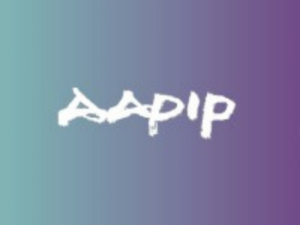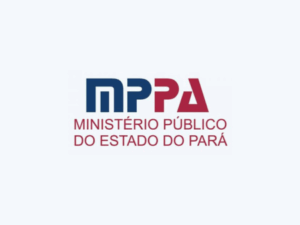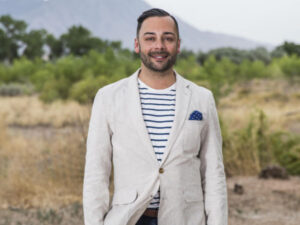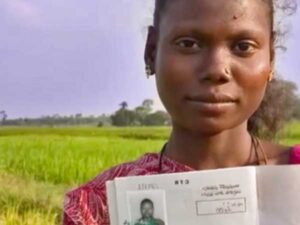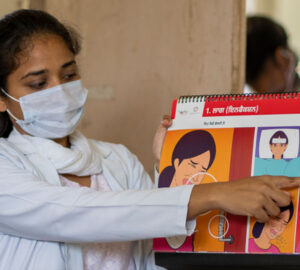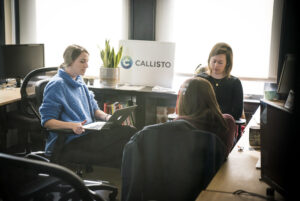VisionSpring works to expand access to affordable eyeglasses and vision screenings so that nonprofits, social entrepreneurs, government agencies, and corporate clients can expand vision health in their communities. EYElliance is a coalition of public, private, and NGO partners working to ensure equitable access to eyeglasses worldwide.
Jordan Kassalow of VisionSpring and EYElliance spoke with Ambika Samarthya-Howard on November 2, 2023. Click here to read the full conversation with insights highlighted.
Ambika Samarthya-Howard: Can you introduce yourself and a little bit about your organization?
Jordan Kassalow: My name is Jordan Kassalow. I am the founder of VisionSpring and the co-founder of EYElliance. Both organizations work on solving the largest disability in the world, which is visual impairment or blindness, secondary to people not having access to a simple pair of eyeglasses. A billion people across the world are visually impaired or blind because they lack that simple tool that has been around for 700 years. We know how to drive the cost of those glasses down to a dollar or so, and there’s really no reason why this problem should continue to plague over a billion people and hamper their personal human capital development. We work to try to change that and we try to take market-based approaches.
The difference between VisionSpring and EYElliance, although they’re both working to solve the same problem, is that VisionSpring is a direct delivery organization that focuses on putting those glasses on people’s faces. EYElliance is an organization which Skoll would call a system orchestrator, where we try to take innovations that come from social enterprises like VisionSpring and others and embed those innovations and those solutions into government structures and or private sector structures to bring the government private sector into the solution. Because with a billion person problem, it’s going to require governance in the private sector to solve it in its entirety.
Ambika Samarthya-Howard: Can you talk a little bit about, for VisionSpring, you’re saying putting glasses on people’s faces. What is the actual approach that you do?
Jordan Kassalow: The important thing to say about VisionSpring, and I think one of the great innovations of VisionSpring, is not only about the distribution and how we actually put glasses on people’s faces, but how we’ve framed the issue. We look at vision not an end to itself, but as a means to human capital. And we’ve always, even though we are a health product and we work with health products, we’ve always thought of ourselves as an economic development organization. We look at vision as an input into economic development. We have three main programs. One is See to Earn, the other is See to Learn, and the third is See to Be Safe, each of those pillars is helping people.The first is for those who need vision to continue to earn their livelihood and stay active in their work. The second is for students, kids who need glasses to stay in school and to prosper in school. The third is for drivers, commercial drivers in particular who are driving, many of them with visual impairments, and making sure that they get the glasses so they’re safe on the road and we’re all safe on the road. We have programs in each of those verticals and we have many different points of distribution. We have realized that there’s not one model that’s going to get a billion people into glasses. So we have many different points of distribution and these are just an example of each of those.
On the See to Earn side, an example is we will go into a country like Bangladesh, which has a huge manufacturing industry, and we’ll work with brands like Levi Strauss, Target and others, and with the factory owners to go into a factory and say, “You’ve got 10,000, 20,000, 40,000 employees who are all day long looking up close and using their eyes to be productive. Most of them need glasses. Let’s get glasses on their faces.” We can go into the factory, do the vision tests, do the vision screenings, and provide about 80% of those people with glasses on the spot. For those who need more, let’s say, complicated prescriptions, we will go back to our laboratory, make the glasses and send them onward moving forward. We’ve got other See to Earn programs that are more farm-based, like with tea plantations, chocolate plantations and so forth.
For our See to Learn programs we go into schools. We have created very cost-effective ways to go into entire school districts and screen all the kids who need glasses on the spot to take care of most of them. For those who need more advanced services or more advanced prescriptions, we’ll manufacture glasses and send them along.
For See to Be Safe, we will go into huge truck stops where thousands of truckers will be and we’ll pop up an optical store and we will screen for the vision of the truck drivers during their rest and make the glasses on the spot. In most cases, if we can’t, we’ll send them along to them.
We have others. That’s just the tip of the iceberg.
Ambika Samarthya-Howard: What about an example of EYElliance?
Jordan Kassalow: An example of EYElliance, which I think helps differentiate from VisionSpring in attacking the problem, is in Liberia. The See to Learn program. There are millions of children who don’t attend school or actually fall out of school. Many girls who are nearsighted, they can’t learn as well, and it doesn’t take much to get them pulled out of school and onto the farm. The nearsighted child is at a huge disadvantage in the school systems, because all the learning is done on blackboards, there really aren’t books and computers. The near sighted child is at a huge disadvantage because they’re learning from a blackboard that’s in the distance. Often, the schools are poorly lit and so they are not learning as they should. Randomized controlled trials have shown that if you get a pair of glasses to a child who needs them, it will fundamentally change the direction of their learning.
A pair of glasses is equivalent to half a year of learning. And it’s one of those things that works. Teacher training, curriculum training, all those things are important, but there’s a lot of controversy over what’s the best way to do it. It’s irrefutable. If a kid can see, they can learn better. When we went into Liberia, there was a small program in the southeast that an NGO was working with the government on. There was a small program in the northwest, an NGO that was working on schoolwide health, not related to the government. The governments didn’t even know those two entities existed. Whereas EYElliance, when we came in, we would meet with the central Ministries of Education and Health and say to them, “Let’s do a national program. Let’s make a political statement and an edict that every boy and girl who is of school age that requires a pair of glasses should get their first pair of glasses at no cost as a public good.” We created policies around that.
We embolden and enlighten the ability of the Ministries of Health and Education to create national school wide health programs that they own as a country. Then we will use the NGOs as technical agents or technical assistance to train the teachers on how to screen the kids, how to get the eye doctors and the refractions to come in to determine the prescriptions. How to create a supply chain. We help them to create a supply chain that is the same supply chain that is used for other products and services that go into the school. We don’t create a parallel supply chain, and we make sure that it’s the governments that own the data and own the program, and the NGOs are just there for support but not for ownership. It takes more of a systems change, policy change, government-led approach to solve for that particular problem of kids not being able to see, in order to learn.
Ambika Samarthya-Howard: That’s great. I assume you measure success from VisionSpring by how many people you’re giving glasses to and how many people have gotten glasses that didn’t have them before. Do you have any other measures of success for VisionSpring? And I’m assuming for EYElliance, you measure success from policy change, or what are your success metrics?
Jordan Kassalow: For VisionSpring, we have a number of success metrics. One of our key ones obviously is the number of glasses on faces, particularly new first time wearers. We track first time wearers because we’re not there to replace the marketplace and to provide lower cost products that might undermine the private sector. We’re there to really get new people and we’re trying to make a dent in that billion person problem. We value all the glasses that we sell, but we put particular emphasis on first time wearers. We have programs where we achieve over 80% first time wearer rates. We have other programs where it’s more like 50%, so depending on where we are, but generally the vast majority of patients that we treat regardless.
Another metric that we look at is something called our PIP, Philanthropic Investment Prepared. We’re trying to do it with an increasingly lower philanthropic investment prepared. So we have a rate of anywhere between zero and $12 of philanthropic investment prepared based on the program. In other words, some programs are fully funded by revenue generated by the program, others require a few dollars and others require $10, $12. Our overall PIP for our organization across the board is around $5 to $6 per person served. So in other words, the poorest people on the planet will pay for the glasses, but because of the fully loaded cost of delivering glasses, manufacturing, delivering, advertising, all of the electricity in New York that we use, everything gets fully loaded into that cost. The end consumer can’t afford the fully loaded cost of those glasses, so they’re subsidized by philanthropy. Our philanthropic investment prepared is around $5 to $6, and we try to over time lower that.
Ambika Samarthya-Howard: So the PIP is the difference between what the foundations are paying and the cost of the glasses?
Jordan Kassalow: Yeah. Let’s say we deliver a pair of glasses to a rural child in India, and this is sort of the average, the fully loaded cost of delivering the glasses is $6. They can only pay $1, so the PIP is $5. It’s the difference between what the patient can pay and the fully loaded cost of delivering that product.
Ambika Samarthya-Howard: How do you define success for the systems change?
Jordan Kassalow: For system change with EYElliance, it’s a number of different things. It’s largely around national policy changes, for instance, in Liberia where we were able to get into policy, a national statement that all boys and girls of school age who need a pair of glasses should get a pair of glasses and it’s a public good for the government. So that’s one way that we measure. We also measure it based on new actors that we can bring into this solution. These are major actors like national governments, like multilateral institutions. We’ve gotten the World Bank much more heavily invested in this space. UNESCO. We’ve helped get the World Health Organization more engaged. We’ve helped unlock resources for the first time from USAID. We actually got a directive by the Congress of $5 million a year to get glasses on people’s faces across the world.
Collectively we’ve raised $23 million through that directive from the U.S. government. That was the first time that’s ever happened, new sources of money like that. It’s new major actors like the multilateral institutions. We’ve brought the development finance corporation into the space. And then it’s also new for-profit entrepreneurs that are seated by our work.
For EYElliance, we have two parts to our model. One is a government model and the other is a private sector model. What we’re looking for there is to increase new capital flows to support local entrepreneurs to go down market and to provide optical services and products to people who are living in the B and D level cities rather than just the A cities.
Ambika Samarthya-Howard: What are some things that haven’t worked that other people could learn from? What would you say would be a lesson for each of these organizations that you would give to this community?
Jordan Kassalow: Well, a lot of things haven’t worked. I think one thing that hasn’t worked is the notion that we can go to the deepest pockets of poverty around the world and create business models that are profitable and fully sustainable. And that subsidy, philanthropic subsidy, does play an important role in the development and creation markets. It’s a long-term kind of play that markets over time will develop, but in order to bring new products and services into markets where there isn’t a built up demand for those products is a long game. It does require philanthropic capital and the patience of investment capital is not there to see those kinds of programs and markets to get a thing like eyeglasses launched. There’s a really important role of philanthropic subsidy, but there’s also a really important role of a market mindset and that the two should be worked in parallel and each has a critical role to play in the creation of new products and services that are pro development. That’s what would be one big lesson that I’ve learned, particularly from VisionSpring.
The other lesson, for EYElliance, is that originally we were more of the mindset that we were going to do more of a collective action kind of work, where we’re going to get a bunch of NGOs together to do that work. Although that is important and we are doing that, and others are doing that, we sort of stepped away from playing that role. We became more convinced that NGOs really should be the seed of innovation and come up with models that work and are cost-effective and proven to be of high impact, but they’re really not the right groups that should be massively scaling. It really should be up to the private sector and the government.
We sort of learned that lesson and we’ve continued to engage the NGO community in the work that we do, but we’ve really put much more of an emphasis on governments than private sector players to try to solve the problem at scaling.
Ambika Samarthya-Howard: I think that’s actually one of the key insights that’s come out, which is you have to work with governance, otherwise there’s only so far you’re going to go. In terms of challenges you have that haven’t gotten solved, what would you say are some limitations that you’ve encountered?
Jordan Kassalow: I think one of the key limitations to this work that affect both the direct delivery impact organization like VisionSpring and more of a system change or some orchestration organization, like EYElliance, is the lack of demand for our products and services that we’ve put maybe too much emphasis on supply side of the problems and not enough on the demand side.
Ambika Samarthya-Howard: That’s so surprising to me.
Jordan Kassalow: Yeah, it’s surprising to me too. I thought when I started VisionSpring, it was going to be like the cell phone. Okay, you just get the first few people glasses and everyone’s going to come out of the woodwork, and it was going to be trying to keep up with demand. It couldn’t have been further from the truth.
Ambika Samarthya-Howard: Do you think that some of that’s cultural, people see glasses as what rich people wear?
Jordan Kassalow: There’s definitely a cultural element to it. There’s a lot of cultural bias against the use of glasses for a bunch of reasons. Some of them are like you said. I remember a story where there was a young boy that got glasses at school and he came home and his grandpa said, “Take those glasses off. Those are for rich people. Those aren’t for simple boys like you.” And so there is a cultural bias against them. Some people feel that glasses make people’s eyes worse.
In India, women are less marriage worthy because they have to wear glasses because there’s something genetically wrong with them. So there’s a whole bunch of cultural context in which people don’t wear glasses. There’s also a lack of awareness. There’s a lot of people who just don’t know that their problem can be solved with a pair of glasses and if they did know it, they think it’s something that, “Oh, I have got to go into the big city and get an exam and take a day off of work and transportation costs and seeing the doctor and then coming back and a week later having going to pick up the glasses.”
It’s just out of reach because it’s going to be too expensive. So there’s a lack of awareness. There’s a lack of accessibility. But at the same time, it’s almost universal that if somebody needs a pair of glasses because their vision’s blurry and you show them what the world looks like with corrected vision, there’s an immediate demand. You wake up the demand in an instant. What I say is that seeing is believing. Once that person experiences proper eyesight, then they ask, “Where can [others] get these?” I remember I was in rural India with one of our board members who founded Oliver Peoples, which is a big brand here in the United States. We were looking on the street and, in a typical Indian village, there’s open air places where everyone was doing their work. We saw a guy, in his fifties or sixties, who was sewing without glasses. I was like, this guy needs glasses. He would see better with them. We went up to him and we said, “Sir, we have some glasses here. Would you buy them for 50 rupees?” And he’s like, “No, no, no, I don’t need them. Thanks.” And then we said, “Just do me a favor, look at your needle and thread the needle.” And he was having a hard time threading the needle. Then we put the glasses on and he was like, it was something we see all the time is sort of elemental surprise, where their eyebrows go to the crown of their head. They’re like, whoa, that’s the way the world’s supposed to look. And he saw the needle, threaded the needle in a second, and he was like, “How much are those?” And he bought a pair on the spot.
The demand was latent, but we woke it up by exposing him to that seeing is believing moment. So demand creation is a complicated thing. Getting over cultural biases is a complicated thing, but I think as a community, that’s an area where we really have to start to invest much more deeply.
Ambika Samarthya-Howard: What do you think you need most for EYElliance in terms of other partners? I understood what you were saying specifically about the government and the policies, but in terms of cooperation or involvement to increase demand, what do you think you need from the other actors to make this change?
Jordan Kassalow: I think it’s a combination of linking policy with innovative and ongoing financing. So one of the things that we’re trying to do for the school eye health program, we’ve got the policy tied down. We’ve got governments starting to show interest in making glasses available to kids in school. We’ve also got a potential payer at scale called the Global Partnership for Education. I don’t know if you’ve heard of them, but GPE, Global Partnership for Education. It’s a multi-billion dollar trust fund that will go into a country. Liberia is an example of a country. There’s about 60 of them across the world that qualify for GPE funding, and they will put together a national education plan to be funded, and GPE will help fund those plans. These are often $50 million, $100 million, $300 million plans. These are big plans and never has there been a line item for vision screening and eyeglasses, until us.
It’s very possible in the $300 million plan to put a $6 million or $10 million line item for vision screening and eyeglasses. That’s sort of connecting the will of the government and the prioritization of the government speaking to the international community to say, “We want our kids to be able to see in school.” When we’re putting together these programs, these $100 million plus budgets, let’s express that intent and interest by having line items specifically for glasses. We need more of the connection to policy, to big financing from the global development community rather than some foundations and private individuals.
Ambika Samarthya-Howard: That makes sense. What happens next? What’s going on for the next 5, 10, 15 years? How is the work evolving?
Jordan Kassalow: For VisionSpring, what’s next is we’re going to continue to work on all three pillars. But the pillar that was always the most deeply held for me personally, and I think for the organization more broadly, is our See to Earn pillar. We are fundamental believers that our highest value is enabling people to stay employed and to continue to earn their livelihoods. A pair of glasses for someone like a weaver or tailor can basically double their working life. For a product that we can sell for a dollar or two, I can’t think of too many things in the development space that for a dollar or two can double someone’s working life. We can do that with this incredible, underutilized product.
We have recently gotten a $15 million grant from MacKenzie Scott that was to the organization writ large. We are going to be using most of those resources to stimulate a larger program for the See to Earn program where we’re trying to leverage that $15 million to a $70 million fund that we’re going to screen and provide glasses to over 10 million farmers, artisans, weavers, tailors, people who are working with their eyes and their hands to earn a living across the world. That’s really where our emphasis is going to be on. We’re going to continue our See to Earn, See to Learn and See to Be Safe programs for sure. We’re doubling down on the livelihood aspect of our work through our See to Earn programs or ClearVision ASAM as an example. We take a state in India and we make sure everybody in that state, whether they work on tea plantations, or are artisans, are going to have access to glasses.
Ambika Samarthya-Howard: Is that true for the system for EYElliance as well?
Jordan Kassalow: For EYElliance, the biggest effort is twofold. On the public side, we are partnering very closely now with the Clinton Health Access Initiative, and we’ve brought them into the fold with this program of school-based screenings as well as another arm that we’re working on with the governments with community health workers.
As you know, there are millions of community health workers around the world. None of the national government ones have been deployed to provide vision screenings and eyeglasses to the people in their community. We’re starting to make that happen. Again, we started in Liberia and we’re going to other countries and we’re making sure that when we can, we train those community health workers en masse to screen the need for glasses and provide those glasses on the spot, whether they’re simple ready-made reading glasses, which is more than half of the problem. We’re going to be doubling down on that. There are 20 countries that overlap with the 62 global partnerships for education countries. Those are going to be some of our priority countries, countries for the community health worker programs. We started that in Nigeria, like we did with the school eye health program. It caught attention from other ministries. We’ve been requested by Nigeria, Rwanda and others, I think Zambia, to go into their countries to help them figure out how to embed vision services into the community health worker models. That’s on the government side.
On the private sector side, we’re going to continue to work with the Development Finance Corporation, Visa Foundation, and others who are supporting us to spur on these local entrepreneurs to create regional optical chains that are profitable chains that are bringing glasses to the underserved markets.
Ambika Samarthya-Howard: My last question, obviously this is all about garnering insights and I’m just curious if you have anything you’d want to share specifically from a founder perspective?
Jordan Kassalow: From a founder perspective, the first thing I would just say wholeheartedly is that nothing’s more rewarding than taking an idea that was close to your heart and manifesting it in the world and seeing people across the world bringing it to life and making it happen. I often talk about how some of my favorite times are on these board trips that we take to the field where it all comes together, where the people who we’re providing the glasses for are interfacing with our VisionSpring team and interfacing with our board members. You have this sort of complete circle of all the different actors that are required in order to solve a problem at scale. We also often bring some of our donors on those trips. From a founder perspective, it’s wonderful and heartening to see that if you have an idea and the conviction, that with hard work and with sustained hard work, you can bring positive change to the world.
Listen, there are huge world problems. We’re not solving world huge world problems, but if every person can solve a problem within their sphere of influence and their expertise, then the world’s going to be a better place. I feel like I’m on sort of the right side of the equation and doing my small part to enable human flourishing in some way. So from a founder that’s… For my personal emotional psychic wellbeing, it’s incredibly rewarding to know that.
The other thing to know is that it’s not about you. This work is about injustice. It’s about inequity and it’s about bringing about a more equitable reality and democratizing vision. The more you can, over time, sideline yourself and get out of the center of it and bring in others who might be more capable in scaling what you’re doing and deepening what you’re doing, don’t stay too long.
Don’t hold on to all levers of power around what you’re doing too long. Give up the levers of influence and power in what you’re doing and share it. My board members always were very complimentary to me to say, in a way, the more power I gave up, the more I earned, the more I had. It was sort of like this sort of weird dualistic reality is that the more I stepped away, the more power I sought to bring to the space and the more power I personally had as a change maker. Those are just a couple reflections that I’d share.
Ambika Samarthya-Howard: I think that’s a good place to end. That’s really powerful. Thank you for talking with me today.
Click here to read the full conversation with insights highlighted.
Ambika Samarthya-Howard (she/her) is SJN’s Chief Innovation Officer: She leads on innovation and technology, leverages communication platforms for the network strategy and creates cool content. She has an MFA from Columbia’s Film School and has been creating, teaching and writing at the intersection of storytelling and social good for two decades. She has produced content for Current TV, UNICEF, Havas, Praekelt.org, UNICEF, UNFPA, Save the Children, FCDO, Global Integrity and Prism.
* This interview has been edited and condensed.
Find other organizations increasing access to care worldwide.


